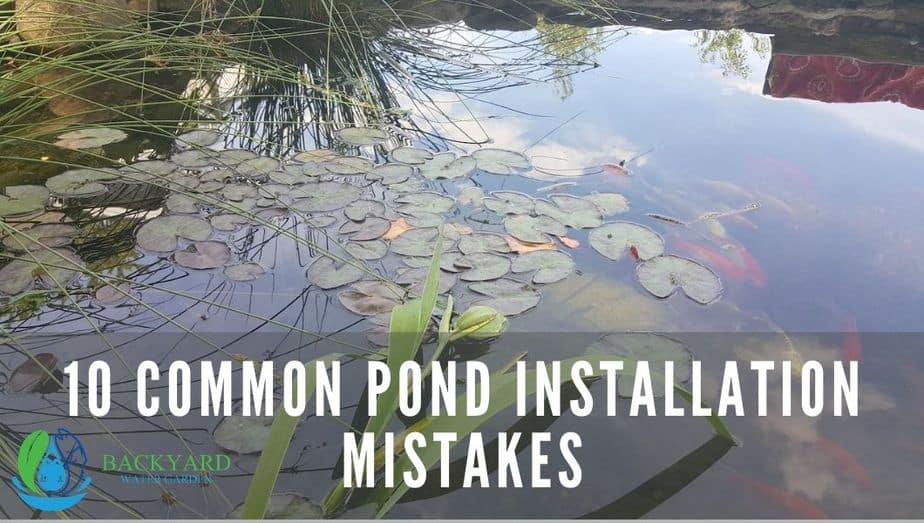
Getting started with your pond installation project can seem overwhelming. It doesn’t have to be. Here is our list of the top 10 common mistakes people make when installing their pond. They say hindsight is 20/20, avoiding these mistakes will keep your vision clear from start to finish.
1. Making it too small
Create the largest pond you can afford in the space allotted. A larger pond will be easier to maintain and have less swings in temperature. Think about it, what takes longer to boil 4 oz of water or 3 gallons. The same holds true for your pond.
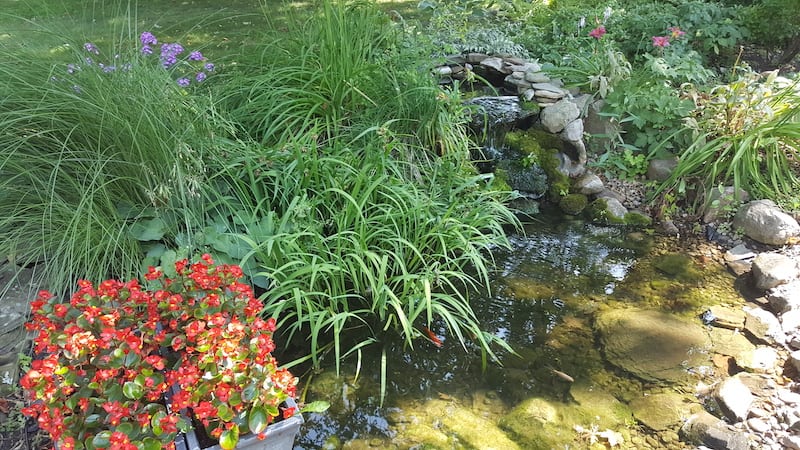
The more water in your pond the less susceptible it will be to environmental changes. The water will dilute out the problem. Keeping your water quality high will make it easier on you for maintenance, and reduce the stress for your fish if you choose to have any.
2. Location
A huge avoidable mistake is not calling before you dig. Doing this assures you will not hit any utilities once you begin. A little piece of mind up front. Don’t leave it to chance or you may regret it. You can go here to be sure you are in the clear.
There is nothing worse than putting tons of time and effort into your project only to realize you should have placed it somewhere else. Keep these things in mind as you scope out the location.

Near trees
Although trees offer wonderful shade, and an abundance of wildlife you may think twice before placing your pond beneath one.
Pros
Trees offer cover for your fish and other wildlife. A tree may make your pond “invisible” to the blue heron that flies overhead. This could be a matter of life and death for your fish.
Shade will also help control the pond temperature. Keeping the temperature more consistent. A shaded pond may not allow as much algae to grow and flourish.
Cons
Leaves sticks and other debris can be an issue when trees are nearby. All of this can have an affect on the amount of sludge that collects on the bottom of your pond. Causing unsafe levels of organic material. Check our guide to muck control for more info on that.
Left untreated could result in fish kills and unwanted odors. This can be combated with the use of a pond net. A skimmer box will also collect anything that falls onto the surface of the pond.
Roots can wreak havoc on your pond in the future. That cute little maple tree next to your water garden may be its downfall. I have never seen a root puncture a liner, but roots around and under your pond will definitely move things around over time.
While shade has many benefits, plants like lilies thrive in full sun. It’s possible that a lily kept in the shade will never bloom.
3. Not prepping the area properly
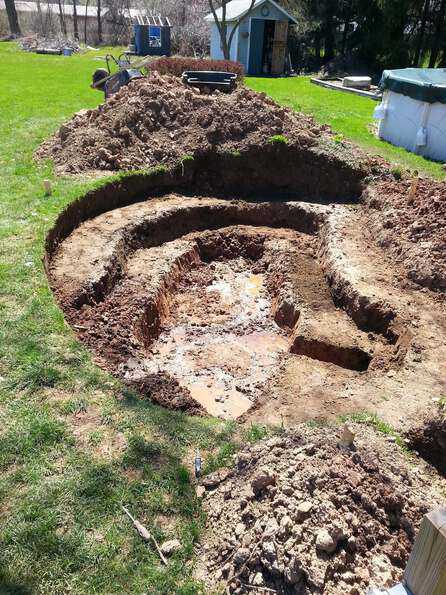
I know what it's like to be impatient. Especially if you are adding a waterfall to your outdoor space. Prepping the ground properly is a very important step that shouldn't be taken lightly.
All sharp stones, sticks and other debris needs to be removed before you place your underlayment. Which leads me to another mistake. Always use underlayment. It is that layer of protection between the ground and your liner.
If you are not using a pond kit be sure to order underlayment that is the same size as your liner. If you’re using a pond kit, no worries you have everything you need.
4. Having a large enough liner
Seems like common sense, but this is a problem many run into when building their pond. To make sure that doesn’t happen to you, use our pond calculator to make sure you get the size you need.
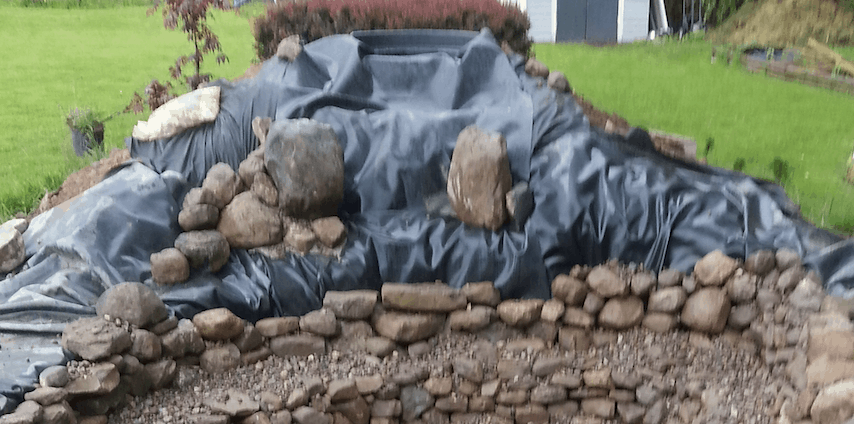
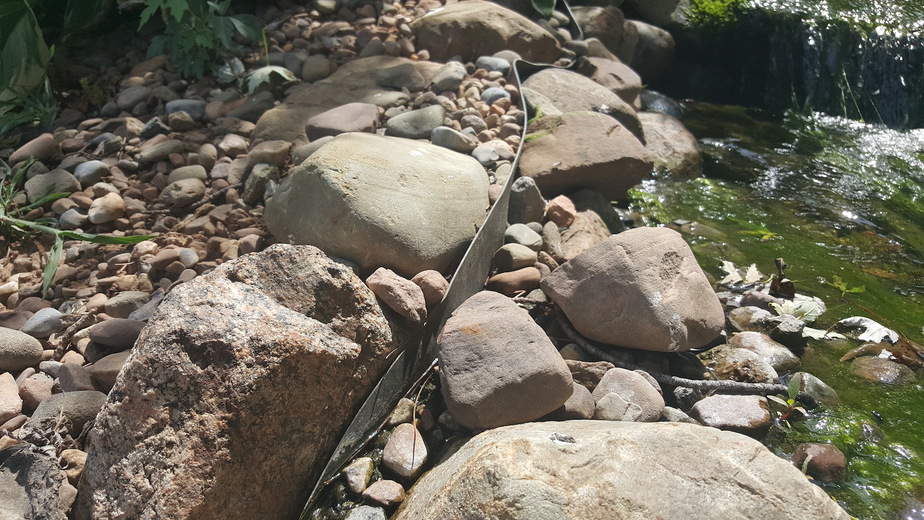
Your liner should leave you with at least 12” of excess around the perimeter when it is filled with water. The reason for this is to ensure water doesn’t spill out of your pond and also to keep runoff water from entering your water feature.
Keeping runoff water out prevents harmful fertilizers, and other chemicals that may be used in the surrounding lawn and gardens from entering the water.
The best practice is to use one piece of liner for your entire project. This helps reduce the likelihood of leaks. If you must use more than one piece be sure the seam is sealed properly and without any wrinkles. If there is a way out, water will find it.
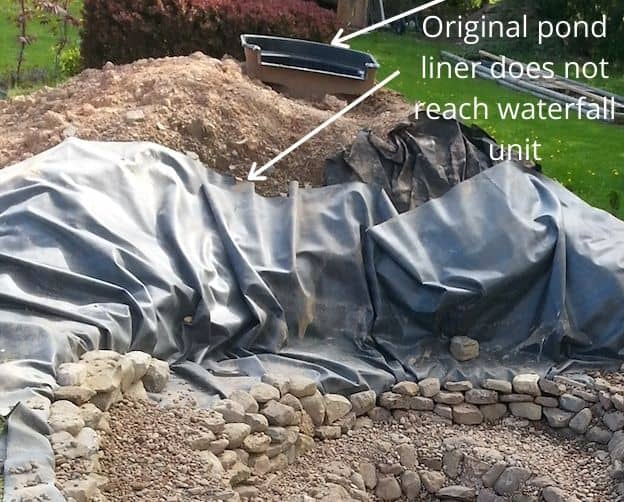
If you are building a pond and wish to add a stream or waterfall later, this can be done without worry. The key is to leave enough excess liner from the original pond (approximately 2 feet) to extend beyond the shore.
When you add your waterfall or stream feature, place the original liner from the pond under the liner you are using for the stream or waterfall. It is a good idea to have enough liner from the stream or waterfall that the overlap goes beneath the surface of the pond.
This can all be hidden with rocks when you are building your waterfall or stream. When building in this manner, no sealant is required. The important thing is to have a solid overlap of liners by at least 2 feet.
5. Improper Filtration
Building a pond can be expensive, or perhaps you don’t have enough time to do the entire project all at once. This is where you may run into trouble. If you are building your pond piece by piece, it is important to have a proper filtration system that is the correct size for your pond, and the fish you plan to keep.
There are a few options when it comes to filtration. One great option is to build a bog filter (link to our article on how to build a bog filter). This is a low maintenance solution that, once set up properly will take care of itself most of the time. Leaving nothing but crystal clear water and beautiful healthy plants.
The drawback of building a bog filter is the amount of space that is required. If you have the room, this is your best option.

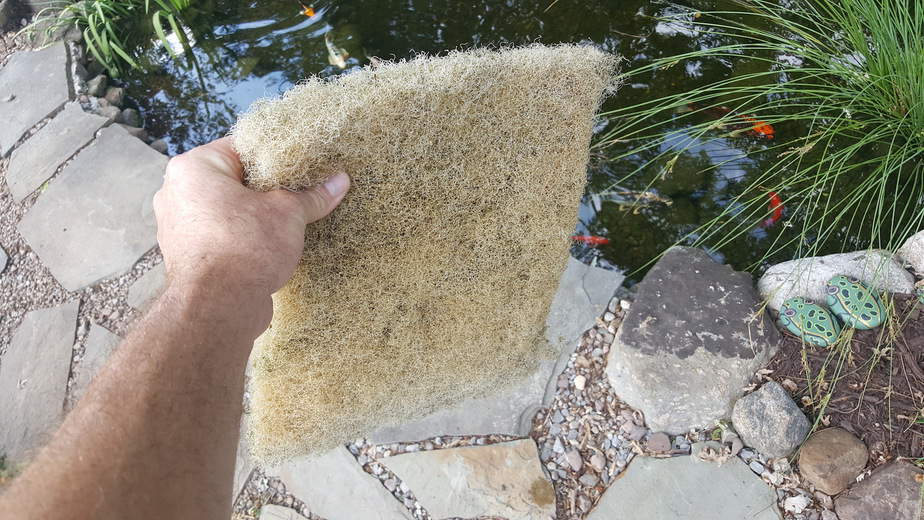
The second best option is the one that is available with most pond kits. This consists of a skimmer box with a net and filter media that also houses the pump. A return line to a waterfall unit that contains more filter pads stacked up. The skimmer box collects most of the debris that falls onto the surface of your pond while the filter pads collect the free floating waste.
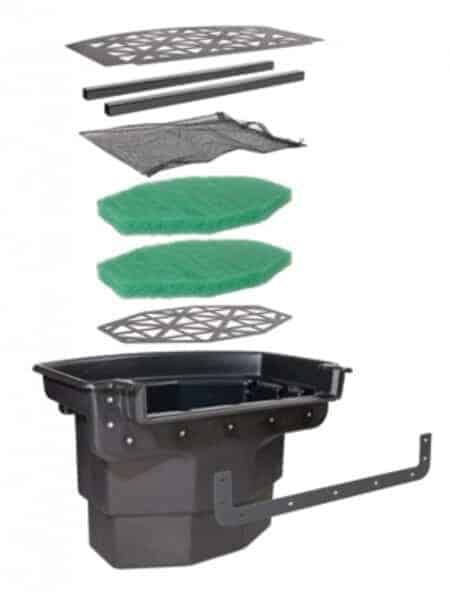
The second best option is the one that is available with most pond kits. This consists of a skimmer box with a net and filter media that also houses the pump. A return line to a waterfall unit that contains more filter pads stacked up. The skimmer box collects most of the debris that falls onto the surface of your pond while the filter pads collect the free floating waste.
The biggest problem with this type of system is the attention that is needed to keep the filter pads clean. Depending on the flow rate of your system, the filter pad may need to be cleaned on a daily or every other day basis throughout the season.
If not tended to regularly, you run the risk of pumping the water out faster than it can come in. This results in your pump pumping air and could cause damage.
We recommend using a pond kit to be sure everything is sized right for your system. If you still want to select your equipment on your own, be sure your filtration system can handle the size of your pond, and the amount of fish you plan to keep.
6. Relying On Waterfall Foam
Building a pond and rocking it properly takes time and practice. Be patient and find the right rock for the space. If you rely too much on waterfall foam, you are building a house of cards.
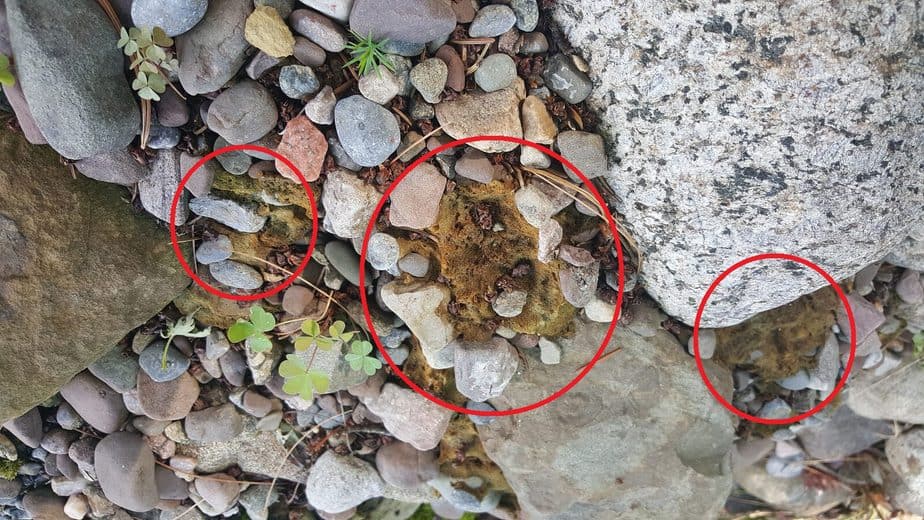
Waterfall foam great for directing water. It will discolor when exposed to sunlight.
Waterfall foam is great for diverting water to where you want it to go, or filling small gaps. If you plan on using waterfall foam to “glue” your rocks together, then plan on rebuilding it all in the not so distant future.
7. Not having aeration
Your pond ecosystem needs oxygen to stay healthy. Keeping the water moving via a waterfall and skimmer box is a great way to be sure oxygen is being introduced into your pond.
Depending on the depth of your pond or the season it may be necessary to add additional aeration (more on that here) to the bottom. This will aid in the breakdown of excess waste and keep harmful toxins at bay. For more on aeration click the link above or get your aeration system here.
8. Adding fish too early and Overstocking
Building a pond is a fun and exciting time. It can be difficult to be patient, especially when you get to the finishing stages. This is where you can go wrong. Adding fish too early can jeopardize their health.
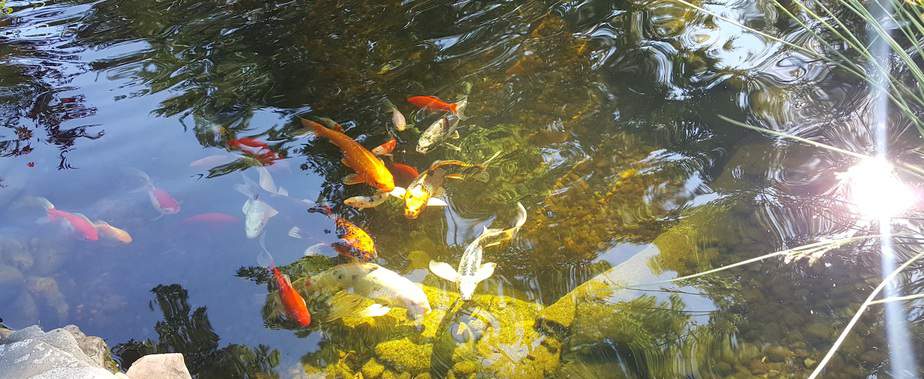
The water in your freshly filled pond needs to be dechlorinated first. After that beneficial bacteria should be added as well to give your new water feature a jump start. The bare minimum to wait before adding fish is 72 hours. We recommend waiting at least a week just to be on the safe side and allow the pond chemistry to balance itself.
Once you begin adding fish to your pond, it can be easy to get carried away. Just one more small koi and before you know it you are overrun with fish and your water quality suffers.
Adding a few fish at a time is the best way to get under way. Be sure to have protection from predators. Giving your fish a place to hide could be the difference between life and death.
9. Not having enough plants
It may be difficult to fully plant a pond early in the first season. Pond plants grow at a rapid pace. Especially when there is an abundance of nutrients.

When your pond is first built it will take time for plants to thrive

Same pond as the previous picture 3 years later
Your pond should have at least 30% coverage with plants. This is natural algae control. By properly planting your pond, algae is starved out. Having enough plants will also take care of excess muck (link to our muck control article) that collects on the bottom.
10. Not Having A UV light
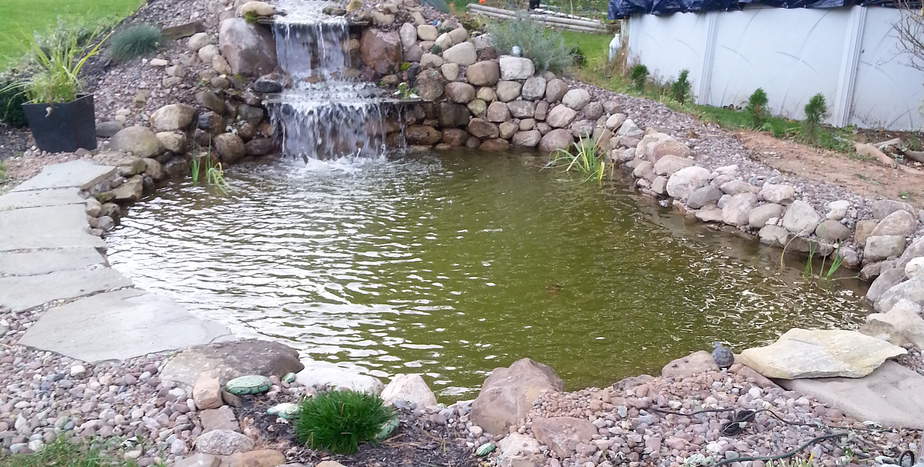
I know a UV light may seem expensive. Especially when you have already made a huge investment with a pond kit, rocks, and various plants and fish. I assure you this is the game changer. It will keep your pond water crystal clear all season long.
Not having a UV light (link to our pond shop for the best UV lights) wasTHE biggest mistake I made when building my first pond. The warm weather hit and everything below the surface disappeared. I was left with a pea green murky mess. The only time I could see my fish was when they came to the surface for food.

Using chemicals helped a bit, but did not solve the problem. Plus shelling out cash for chemicals month after month got old very fast. Not to mention remembering to put them in on a regular basis.
The only thing that truly made a difference was the installation of a UV light (link to our UV light article).
Conclusion
I know nothing goes quite as planned. Sure there may be bumps along the way. There is no better time than right now to start your pond project. Avoiding these 10 mistakes when you build your pond will keep you ahead of the curve. You will get professional results and a bakyard you can be proud of. Until next time, enjoy your backyard water garden.
~Jeff





Hi Jeff,
What are your thoughts on a solar powered pond? I really don't want to use electricity unless I have to. Are there ones you suggest? Thank you!
–
I understand you wanting to keep your pond off the grid. I have an article on solar powered pond pumps and fountains that you may find helpful.
Not only will you not need to use electric utilities, but you have the freedom to place your pond or water feature wherever you please. You aren’t restricted by a power source. Hope this helps.
Hey Jeff,
What do you do with your pump, etc. in the summer if you go on vacation?
I saw a video of yours and know that you shut it off from fall until spring.
I don’t believe that you can leave the system unattended even if there is an auto shut off.
Thanks,
John
Great question John! You are absolutely right. I wouldn’t recommend leaving your pond unattended for any serious length of time. Usually when we go on vacation we have a neighbor stop in every few days to check on things.
There are too many things that could go wrong while you’re away. If you don’t have the luxury of calling a neighbor or friend, the best thing you could do is use an automatic feeder for your fish.
I would recommend shutting off your pump, and use an aeration system while you are away. There are far less things that could go wrong. You may not get the same filtration but at least the water will stay oxygenated, without worry of your pump running dry for any number of reasons.
Having a pond is a lot of responsibility. However like many things in life if you plan ahead things will go smoothly.
Cheers,
~Jeff
Hey Jeff,
Full disclosure here, I’ve yet to start the installation of my backyard water garden…..
I’m gathering up as much info. as possible and your site has been a tremendous help.
I don’t plan on having any fish as I’m more into insects and amphibians!
Is the flexible PVC hose from the skimmer to the waterfall rodent proof? Or should I wrap it with hardware cloth?
And what about using the same material under the underlayment? Is that overkill?
I’ve read about rodents damaging pond liners and want to avoid that at all costs.
Thanks Jeff,
John
John,
That’s a very good question. I’m not exactly sure. I do know the mound my waterfall is nestled in is also home to a family of chipmunks. They have been there the past 2 years or so, and I haven’t had any issues.
The PVC pipe for the waterfall return is very thick, and is rated to withstand the freeze and thaw cycle without splitting. How well it will hold up to rodent teeth remains to be seen.
Whether or not you have a rodent problem is not the question. Building a pond is a lot of hard work and dedication. If it helps you sleep at night wrapping your return line in hardware cloth by all means do it.
As far as using it under the underlayment, it sounds like overkill to me. I don’t want to tell you not to do it then your liner turns into swiss cheese (literally). There are no absolutes, and freak things do happen. Again I don’t believe it’s necessary, but if it is something you will constantly worry about then you should do it.
After all, your pond should bring you peace and joy, not worry. I wish you luck with your project and I would love to see pictures when you are done.
Cheers,
~Jeff
Finally ready to finish digging out my pond!!
I’ve seen many videos of waterfall foam being used to rock the pond walls. It looks easy to use and appears to hold everything in place perfectly.
My question is, God forbid your pond springs a leak, how the heck would you be able to find a tear in the liner?
I read that the foam sticks to the liner so it seems to me it’d be impossible to repair or even find the tear.
What are your feelings on using foam?
Did you use it in your pond?
Thanks Jeff,
John
John,
This is a great question. Foam works very well when you are building your pond and stacking rocks. The down side is if you rely too heavily on the foam. Understand its limitations. Although it will stick to the liner and help hold things together, the rocks in your pond should be able to stand on their own without the help of the waterfall foam. Use the foam as insurance, not as a crutch for poor rock placement.
Dry stack your rocks so they fit together and lock into place on their own. This does take a lot of trial and error, but it is worth it in the long run. You can check out the article on building a waterfall https://backyardwatergarden.com/building-your-backyard-waterfall/ for more in depth discussion on this topic.
Waterfall foam is also helpful for diverting water to where you want it. For instance over your spill over rocks instead of behind it.
As far as getting a leak in your liner goes. You are correct, the hardest part would be finding it. Most of the time it is the result of water splashing out or being diverted out of the pond in some way. With a rubber pond liner you seldom have to worry about a sliced liner once everything is in place.
Wishing you the best of luck on your project!
Cheers,
~Jeff